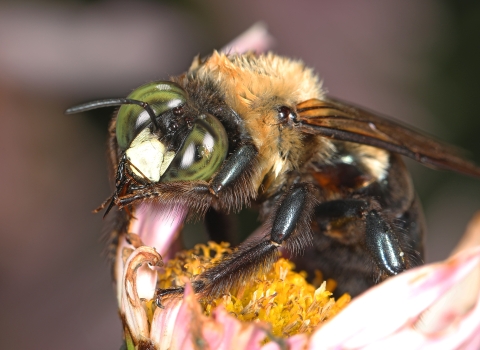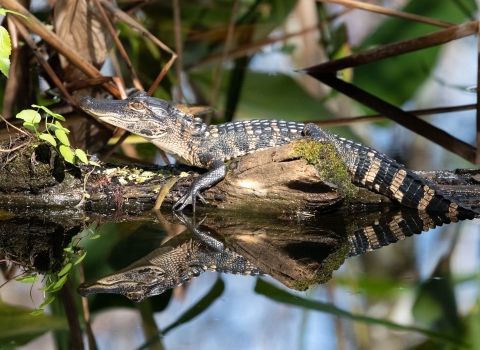The U.S. Fish and Wildlife Service seeks public comment on a proposed rule to designate 910 acres of critical habitat for Tiehm’s buckwheat, a low-growing perennial herb found only in Nevada. The proposed critical habitat is located in Esmeralda County in western Nevada. In October 2021, the Service proposed to list Tiehm’s buckwheat as endangered under the Endangered Species Act.
Tiehm’s buckwheat plants have blueish-gray leaves and pale yellow flowers that bloom from May to June and turn red with age. Seeds ripen in late June through mid-July. It has an extremely restricted range, with only one known population comprised of eight subpopulations scattered across a 3-square mile area in western Nevada’s Silver Peak Range. Tiehm’s buckwheat requires habitat with sparsely vegetated areas with suitable soil, elevation, topography and hydrology; a native plant community to support pollinators when it is not flowering; and connectivity between subpopulations to allow pollinators to move, nest and forage freely between them for plant reproduction.
The proposed critical habitat is on land managed by the Bureau of Land Management and is currently occupied by the plant’s single population. The designation of critical habitat would not affect land ownership or establish a wildlife refuge, wilderness reserve, preserve or other conservation area conservation area
A conservation area is a type of national wildlife refuge that consists primarily or entirely of conservation easements on private lands. These conservation easements support private landowner efforts to protect important habitat for fish and wildlife and major migration corridors while helping to keep agricultural lands in production.
Learn more about conservation area .
“Designating critical habitat for Tiehm’s buckwheat is key to the plant’s persistence and recovery because it occupies such a small range and requires such specific habitat conditions to survive,” said Marc Jackson, field supervisor for the Service in Reno. “This designation will help us work more effectively with our partners to support current and future land uses that promote conservation and recovery of Tiehm’s buckwheat.”
Primary threats to the species include predation by animals eating the plants (herbivory), mining, off-highway vehicles and grazing. Climate change may also impact the species, and the Service has determined that the plant is in danger of extinction throughout all of its range.
The U.S. Fish and Wildlife Service seeks input from the public, Native American Tribes, other government agencies, the scientific community, industry or other interested parties on the proposed critical habitat designation. The proposed rule will publish in the Federal Register on February 3, 2022, opening a 60-day comment period. The Service will accept comments received or postmarked before April 4, 2022. The proposal and information on how to submit comments can be found on www.regulations.gov by searching under docket number FWS–R8–ES–2020-0017.
Requests for a public hearing on the proposed rule must be submitted in writing by March 21, 2022, and submitted by U.S. mail to: Marc Jackson, Field Supervisor, U.S. Fish and Wildlife Service, Reno Ecological Services Field Office, 1340 Financial Boulevard, Suite 234, Reno, Nevada, 89502.
Click here for Frequently Asked Questions.
The U.S. Fish and Wildlife Service works with others to conserve, protect, and enhance fish, wildlife, plants and their habitats for the continuing benefit of the American people. For more information about our work and the people who make it happen, visit https://www.fws.gov/renoor connect with us via Facebook, Twitter, YouTube and Flickr.



